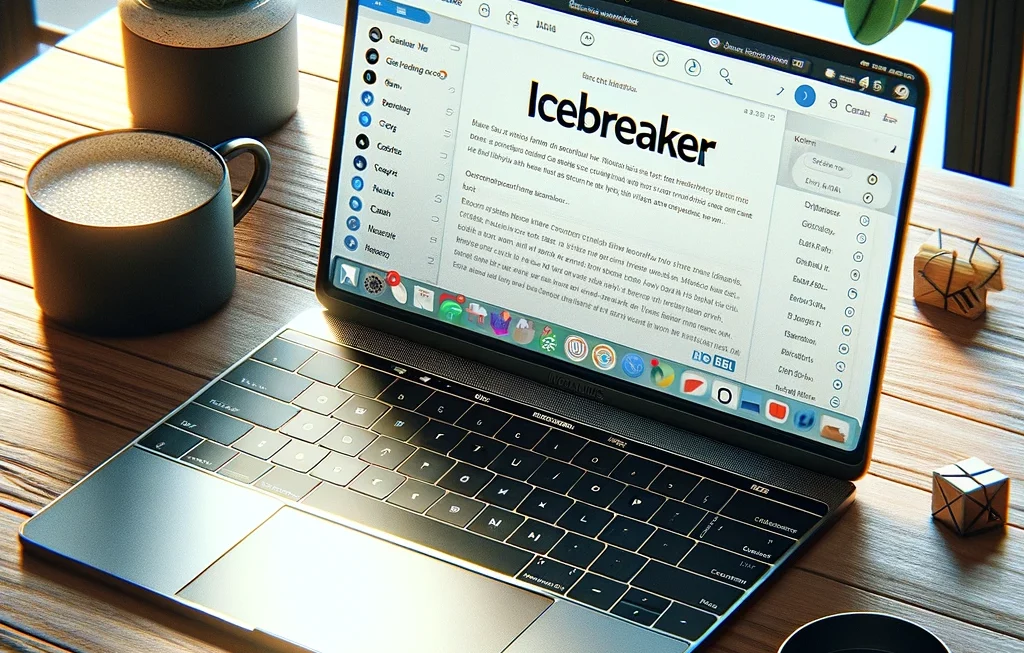Professional email responses are vital in the business world because they represent the professionalism and reliability of a person or company. A well-written email can create a strong first impression or maintain a positive image with clients, colleagues, and partners. Promptly replying to emails shows that you value the sender’s time and concerns, which helps build trust and good relationships. Clear and direct communication in emails can also reduce confusion, answering questions fully to avoid back-and-forth follow-ups.
Efficient email practices save time for everyone involved, making business processes run smoother. Additionally, emails often serve as a documented trail of correspondence, which is important for keeping records of decisions and interactions for future reference. In essence, being adept at writing professional emails is crucial for effective communication, preserving accountability, and ensuring smooth business transactions.
Tips for Professional Email Responses
Writing professional email responses is an art that combines courtesy, clarity, and conciseness. Here are some tips to help you craft effective emails:
Prompt Reply:
Respond to emails within 24 hours whenever possible to show that you value the sender’s time and message.
Appropriate Salutation:
Begin with a proper greeting such as “Dear [Name],” or “Hello [Name],” to set a professional tone.
Clarity and Brevity:
Be clear and to the point. Avoid unnecessary jargon or long-winded explanations that might confuse the reader.
Address the Query:
Ensure you answer all questions posed in the initial email. If the answer requires more time or information, acknowledge the question and state that you will get back to them with more information.
Use Templates Wisely:
While templates can save time, personalize your response to fit the situation and show the recipient that you’ve read and understood their email.
Professional Tone:
Maintain a professional tone throughout your email. Be polite and respectful, even if the content of the email is critical or the sender is frustrated.
Proofread:
Check for spelling, grammar, and punctuation errors. Mistakes can undermine the professionalism of your message.
Appropriate Closing:
End your email with a professional closing, such as “Best regards,” “Sincerely,” or “Thank you,” followed by your name and position.
Use Bullet Points or Numbers:
If you’re providing information that can be listed, bullet points or numbers can enhance readability.
Attach with Care:
If you need to include attachments, mention them in the body of the email to ensure they are not overlooked.
Confidentiality Note:
If applicable, include a note about confidentiality to remind the recipient that the information is intended for them only.
Follow-Up:
If you are expecting a continuation of the conversation, indicate that you look forward to their response or the next steps.
Email Signature:
Use a professional email signature that includes your contact information, making it easy for the recipient to contact you if necessary.
Keep it Positive:
Even if the email content is not what the recipient hoped for, strive to maintain a positive or neutral tone.
Cultural Sensitivity:
Be mindful of cultural differences in communication styles, especially when dealing with international correspondents.
Everyday Use Professional Email Responses
Acknowledging Receipt of an Email
- Simple Acknowledgment “Thank you for your email. I have received your message and will review the details and get back to you shortly.”
- Acknowledgment with Immediate Response “I appreciate your quick response. To answer your question…”
Responding to a Request for Information
- Providing Requested Information “You asked about [specific information]. Here are the details…”
- Requesting More Time to Provide Information “I am currently gathering the necessary information and will get back to you by [specific date].”
Addressing a Complaint
- Initial Response to a Complaint “I’m sorry to hear about your issue. We are looking into this and will update you by [specific date/time].”
- Follow-up to a Resolved Complaint “I hope the solution we discussed has been satisfactory. Please let me know if there’s anything else I can do for you.”
Thanking Someone
- Professional Thank You “Thank you for your assistance with [project/task]. Your help was invaluable.”
- Thank You with Follow-up “Thanks for the quick turnaround. Could we set up a time to discuss the next steps?”
Apologizing
- Simple Apology “I apologize for any inconvenience this may have caused.”
- Apology with Solution “I’m sorry for [specific issue]. We’ve taken steps to ensure it won’t happen again by…”
Making a Request
- Requesting Information “Could you please provide me with an update on [specific item]?”
- Asking for a Meeting “Would it be possible to schedule a meeting to discuss [topic]?”
Confirming a Meeting or Appointment
- Confirmation “I am writing to confirm our meeting [date/time]. Looking forward to our discussion.”
- Rescheduling “Unfortunately, I need to reschedule our meeting due to [reason]. Could we meet on [alternate date/time] instead?”
Following Up
- Post-Meeting Follow-Up “It was great to meet with you on [date]. As discussed, I will [next steps].”
- Checking In “I wanted to check in on [project/task]. How is everything progressing?”
Offering Assistance
- General Offer of Help “If you need any further assistance, please don’t hesitate to ask.”
- Specific Offer of Help “I noticed you might need some help with [task]. I have experience with this and would be glad to assist.”
Declining a Request or Proposal
- Polite Declination “Thank you for considering me for [opportunity], but unfortunately, I will have to decline due to [reason].”
- Declination with Alternative “I am not able to commit to [request] at this time. However, I think [alternative person/solution] may be able to help you.”
Responding to a Job Inquiry
- Acknowledging a Resume Submission “Thank you for submitting your resume for the [job title] position. We are reviewing applications and will be in touch should your qualifications meet our needs.”
- Informing of Job Application Status “We wanted to let you know that your application for [position] is still under consideration. We are working on making a decision and will update you by [time frame].”
Handling Information Updates
- Notifying of an Update “I would like to inform you of a recent update to [project/task]. Please see the attached document for more details.”
- Announcing Changes to a Service/Product “We are excited to announce some improvements to [service/product]. These changes will [benefits of changes].”
Requesting Feedback
- Feedback Request Post-Service “We hope you are pleased with our service. We would greatly appreciate it if you could provide us with feedback on [specific service/product].”
- Post-Project Feedback Solicitation “Now that we have concluded [project], we’d love to hear your thoughts on the process and outcome.”
Delivering Bad News
- Notification of a Delay “Unfortunately, we are experiencing a delay with [reason for delay]. We expect to resolve this by [new timeline].”
- Cancellation Notice “We regret to inform you that [event/meeting] has been canceled due to [reason]. We apologize for any inconvenience.”
Addressing Billing Issues
- Clarifying a Billing Discrepancy “We’ve received your inquiry about your recent bill and are currently investigating the discrepancy.”
- Confirming a Payment Plan “As per our conversation, we have arranged a payment plan for your account. Your first installment is due on [date].”
Responding to a Reference Request
- Agreeing to Provide a Reference “I would be happy to provide a reference for you. Could you please send me the job description to tailor my recommendation accordingly?”
- Declining a Reference Request Politely “I don’t feel I’m the best person to provide a reference in this instance, as I haven’t worked closely with you on [specific tasks/projects].”
Handling Sensitive Topics
- Discussing a Sensitive Issue “It’s come to my attention that there may be some concerns regarding [issue]. I believe it would be best to discuss this in person. When would be a suitable time for you?”
- Addressing Confidential Matters “Please be assured that your message regarding [confidential matter] is being handled with the utmost discretion.”
Confirming Receipt of Payments or Documents
- Payment Confirmation “We have received your payment for [invoice number]. Thank you for your promptness.”
- Document Receipt Confirmation “Your documents for [purpose] have been received and are being processed.”
Crafting an Out-of-Office Reply
- Short-term Out-of-Office “Thank you for your email. I am out of the office until [date] and will reply to your message upon my return.”
- Extended Leave Out-of-Office “I will be away from [start date] to [end date]. For immediate assistance, please contact [colleague’s name] at [colleague’s email].”
Responding to Praise or Positive Feedback
- Acknowledging a Team Effort “I’m glad you’re pleased with the result. It was a team effort and I will pass along your compliments.”
- Personal Appreciation Response “Thank you for your kind words. I’m thrilled to hear that you’re satisfied with [specific work].”




